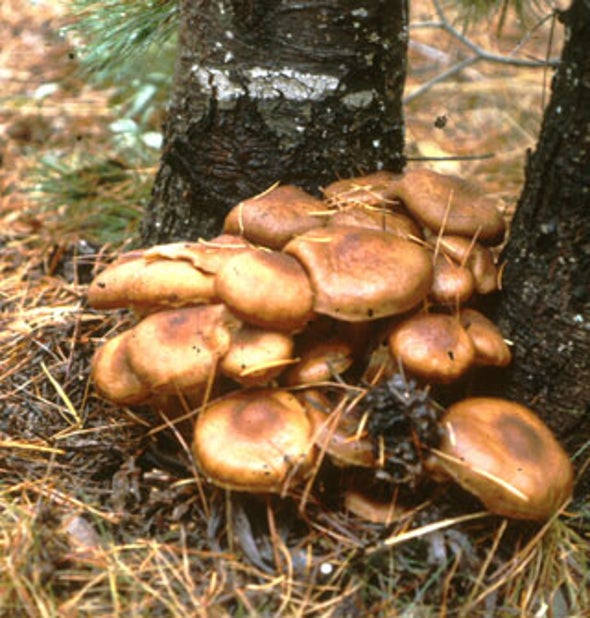Are you ready to learn some fascinating new facts? From the bizarre to the unbelievable, we've gathered a list of the top 10 facts that will blow your mind. So sit back, relax, and get ready to expand your knowledge with these incredible facts:
-
The shortest war in history lasted only in 38 minutes! It was between Britain and Zanzibar in 1896.
This is called Anglo-Zanzibar War, which took place on August 27, 1896, is widely regarded as the shortest recorded war in history. The conflict occurred between the British Empire and the Sultanate of Zanzibar, located in modern-day Tanzania.The war was sparked by a succession dispute following the death of Sultan Khalid bin Barghash, who had seized power without British approval. The British authorities supported another candidate, Sultan Hamad bin Thuwaini, as the rightful successor. When the deadline for surrendering power passed, the British launched an attack on the Zanzibar defenses. The bombardment from British warships began at 9:02 a.m. local time and lasted approximately 38 minutes. During that time, the British forces, comprising three cruisers, two gunboats, and several smaller vessels, bombarded the Sultan's palace and other key targets. The Zanzibar defenses, consisting of a poorly equipped naval and shore battery, were quickly overwhelmed. The Sultan's forces suffered heavy casualties, while the British only reported one sailor injured. Sultan Khalid sought refuge in the German consulate but was eventually captured and exiled. The war ended with the formal surrender of the Zanzibar forces, and a new Sultan, appointed by the British, assumed power. The conflict's brevity earned it the distinction of being the shortest recorded war in history, with the actual fighting lasting less than an hour.
-
Bananas are berries, while strawberries are not!
Contrary to popular belief, bananas are classified as berries, while strawberries are not. Botanically speaking, berries are defined as fleshy fruits produced from a single ovary and typically contain multiple seeds. Bananas fit this definition as they develop from a single flower with an inferior ovary. On the other hand, strawberries are actually aggregate fruits formed from multiple ovaries of a single flower. So, while strawberries are widely referred to as berries, they do not technically meet the botanical definition, while bananas do.
-
The world's largest snowflake on record measured 15 inches wide and 8 inches thick!
This incredible snowflake was observed during a snowstorm at Fort Keogh, Montana, in 1887. It was documented by a farmer, Wilson A. Bentley, who studied snow crystals extensively. While the exact details and circumstances of its formation are not known, this remarkable snowflake stands as a testament to the captivating intricacies of nature's frozen artistry.
-
The human nose can detect over 1 trillion different scents!
The human nose possesses an astonishing ability to detect an extensive range of scents. It is estimated that our olfactory system can discern over 1 trillion distinct aromas. This remarkable sensory capacity allows us to perceive a myriad of fragrances, from pleasant and enticing odors to repulsive or subtle scents. The nasal receptors work in harmony with the brain, enabling us to distinguish the fragrance of blooming flowers, freshly brewed coffee, aromatic spices, fragrant perfumes, pungent chemicals, soothing lavender, tantalizing food aromas, damp earth after rain, fragrant fruits, nostalgic scents, and countless other olfactory experiences that enrich our daily lives. The intricate complexity of our sense of smell continually unveils the wonders and diversity of the world around us.
-
In Japan, there is a train station that has no entrance or exit. It was built solely to allow passengers to admire the scenery.
In Japan, there exists a unique train station known as Seiryu-Miharashi Station. This extraordinary station stands out because it lacks any designated entrance or exit. Instead, it was purposefully constructed solely for the purpose of offering passengers a picturesque view of the surrounding scenery. Located in the Nagano Prefecture, Seiryu-Miharashi Station is situated on a scenic railway line, offering breathtaking vistas of the Chikuma River and the magnificent Japanese Alps. Passengers can marvel at the stunning landscapes as the train passes through the station, making it a popular destination for tourists and nature enthusiasts seeking a memorable and visually captivating train journey through the beautiful Japanese countryside.
-
The world's oldest piece of chewing gum is over 9,000 years old!
The world's oldest known piece of chewing gum dates back over 9,000 years. This ancient gum was discovered in Sweden and is believed to have been made from birch bark tar. Archaeologists made the fascinating find during an excavation, where they unearthed a small lump of chewed material. Chemical analysis confirmed its composition as a prehistoric chewing gum. It provides a unique glimpse into the ancient practice of gum chewing by our ancestors. The discovery showcases the long-standing human inclination to enjoy the act of chewing and highlights the endurance of this simple pleasure throughout millennia of human history.
-
Humans share 50% of their DNA with bananas.
Contrary to a common misconception, humans do not share 50% of their DNA with bananas. While it is true that humans share a certain degree of genetic similarity with other organisms due to common ancestry, the specific percentage of shared DNA between humans and bananas is significantly lower. The genetic makeup of humans and bananas differs greatly in terms of complexity, structure, and functioning. Humans share a closer genetic relationship with other primates, such as chimpanzees, with whom we share approximately 98% of our DNA. However, when it comes to bananas, the genetic similarity is much less significant.
-
cockroach can live for several weeks without its head!
It is indeed true that a cockroach can survive for several weeks without its head. Cockroaches have an open circulatory system, meaning they don't rely on their heads to circulate oxygenated blood. While the loss of their head does result in the inability to eat or drink, cockroaches can still survive due to their decentralized nervous system. The majority of their vital organs are located in their body, and nerve ganglia control their basic functions. However, without a mouth, a cockroach eventually dies due to a lack of water or food intake. Nevertheless, their ability to survive for a period without a head is a fascinating example of their remarkable resilience.
-
The largest living organism on earth is a fungus in Oregon that covers over 2,200 acres!
The largest living organism on Earth is indeed a fungus known as Armillaria ostoyae, or the "honey fungus." It spans an impressive area of over 2,200 acres (8.9 square kilometers) in the Malheur National Forest in Oregon, United States. This enormous fungal network, commonly referred to as a "humongous fungus," primarily exists underground as a mycelium—a vast interconnected web of thread-like structures. While the visible fruiting bodies, commonly known as mushrooms, may be small, the extensive underground network of the Armillaria ostoyae makes it the largest organism in terms of spatial coverage. It is estimated to be thousands of years old and continues to thrive in the forest ecosystem.
-
The Great Wall of China is not visible from space without aid!
The notion that the Great Wall of China is visible from space without aid is a common misconception. While the Great Wall of China is an impressive architectural feat, it is not visible to the naked eye from space, especially from low Earth orbit. Astronauts who have been to space have reported that the wall is challenging to see without the assistance of binoculars or zoomed-in photography equipment. The width and color of the wall, combined with the vastness of the surrounding landscape, make it difficult to discern from such a distance. Other prominent human-made structures, like highways and buildings, are also not readily visible from space without specialized equipment.
Did any of these facts surprise you? We hope you've enjoyed this list of amazing and intriguing tidbits. Stay tuned for more interesting content from our blog!






.png)

